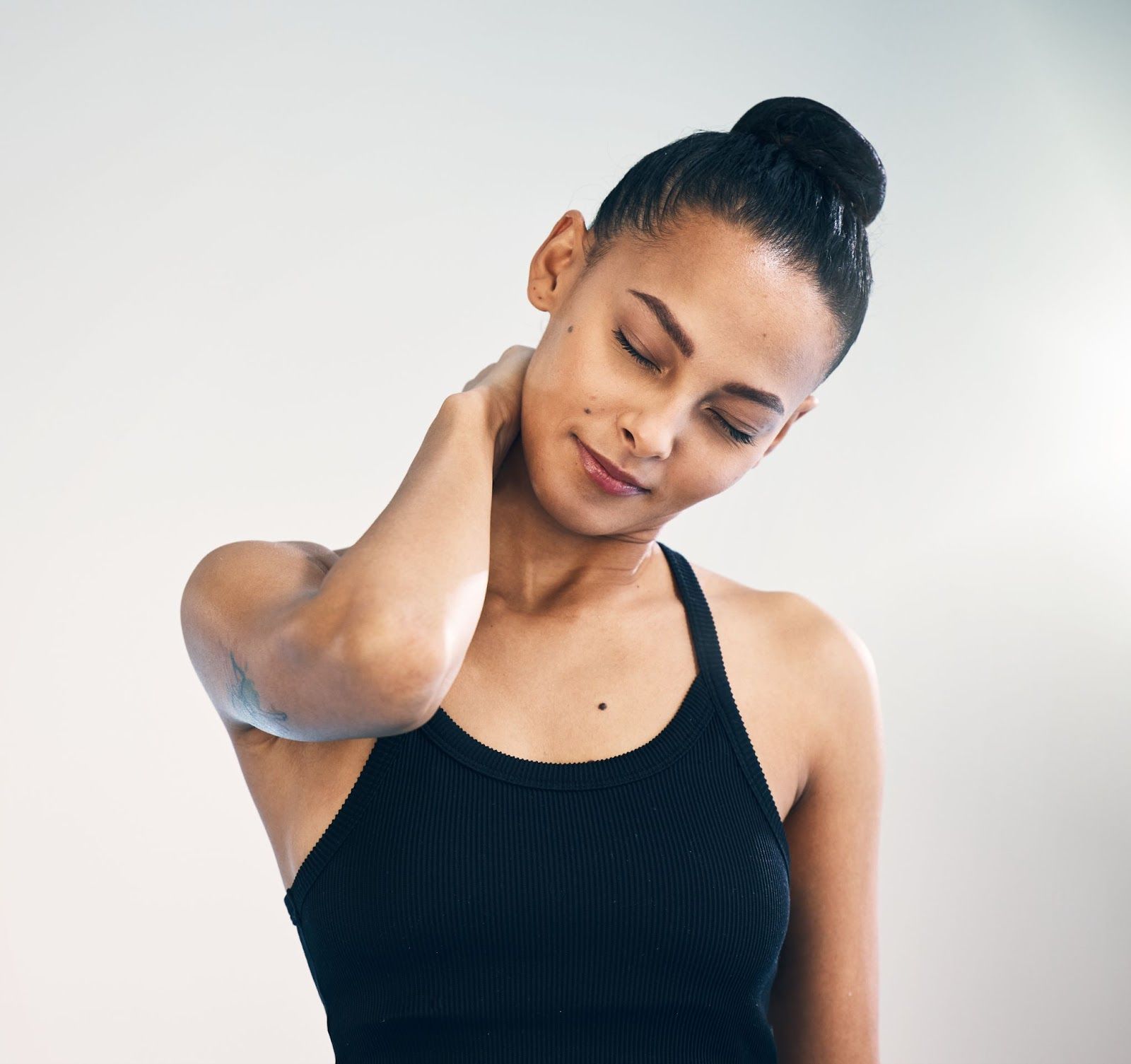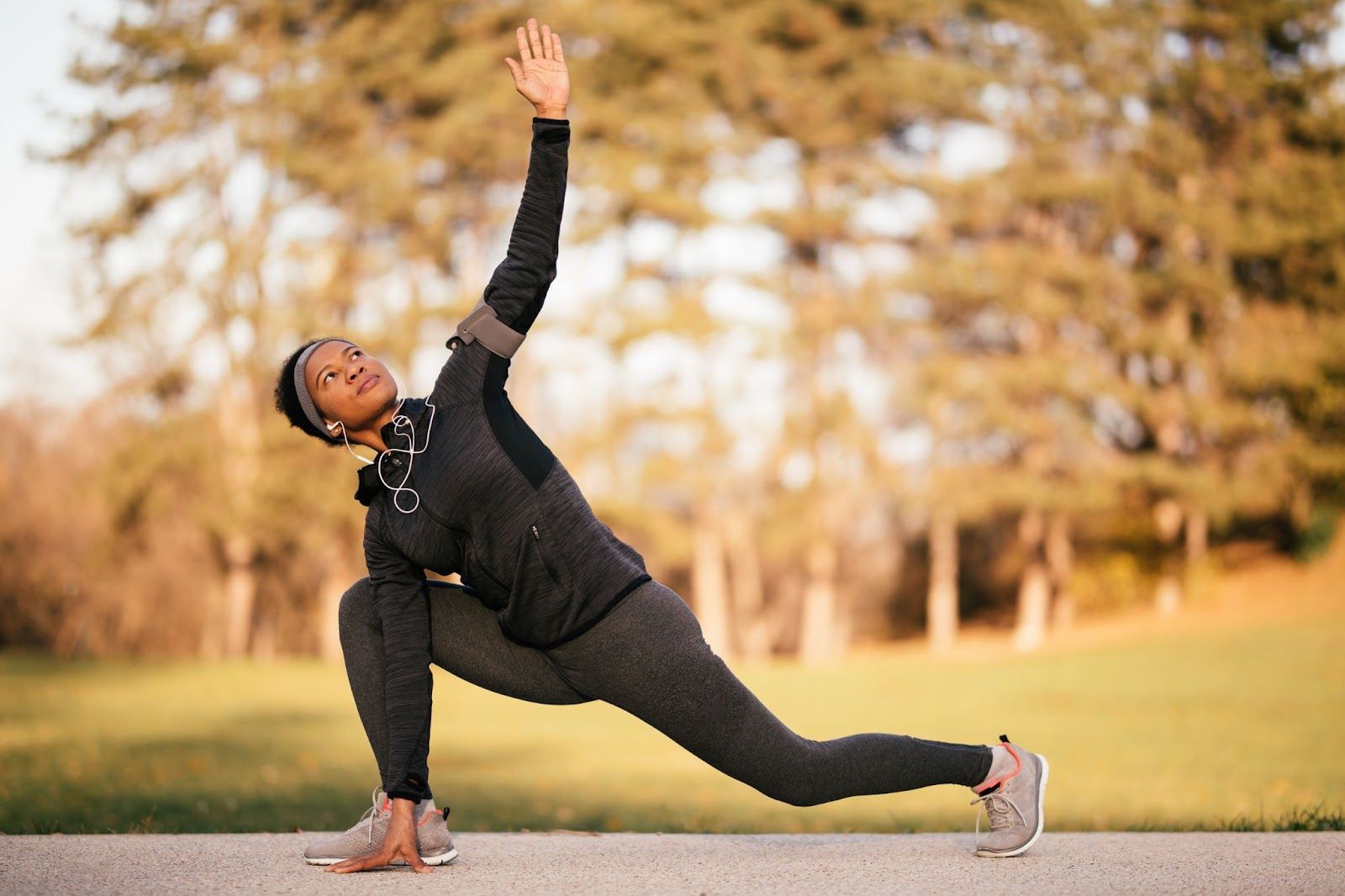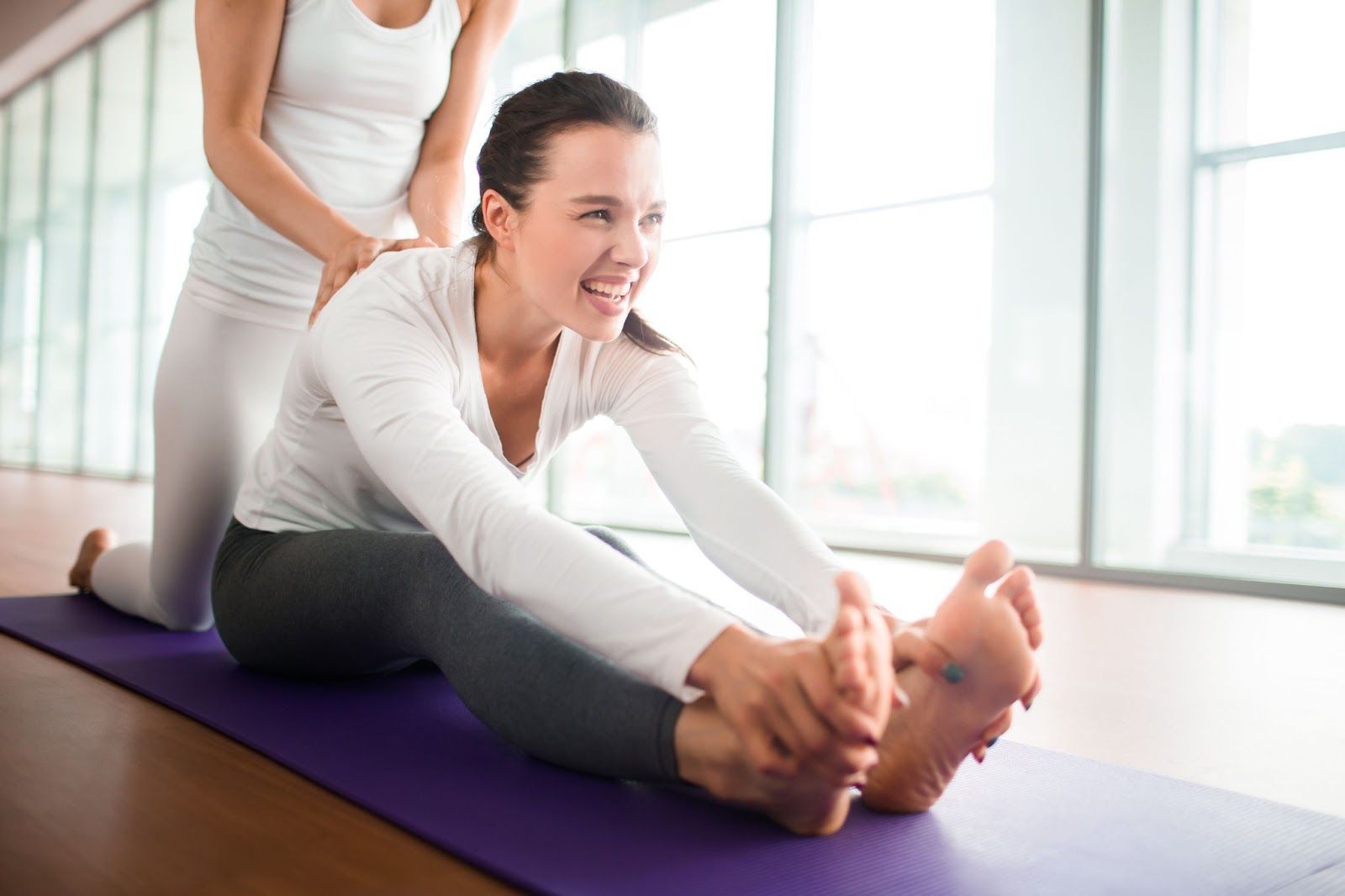Stretches for Cyclists: Essential Exercises to Improve Performance and Prevent Injury
Cyclists push their bodies to the limits, navigating challenging terrain and enduring long rides to reach their destinations. They rely on strength, endurance, and agility to conquer steep climbs, power through sprints, and maintain a steady pace over miles of road or trail. However, repetitive cycling can lead to muscle imbalances, tightness, and overuse injuries, hindering performance and causing discomfort. Stretching is crucial in maintaining flexibility, mobility, and muscle balance, essential for achieving optimal cycling performance and preventing injuries.
Understanding Cycling Mechanics and Muscle Engagement
Cycling mechanics are essential for smooth biking, which relies on how your muscles coordinate to move the bike forward. Pedaling targets several muscles, all working together for power and balance. Knowing these mechanics is vital to better biking and avoiding injuries.
Explanation of Cycling Biomechanics
Cycling biomechanics involves how the body moves on the bicycle, covering aspects like pedal stroke mechanics and force distribution. Muscles like the quadriceps, hamstrings, calves, and glutes power the downstroke, while hip flexors and core muscles stabilize the pelvis and maintain alignment.
Identification of Key Muscle Groups Used in Cycling
Key muscle groups in cycling include the quadriceps, hamstrings, calves, and glutes. The quadriceps extend the knee and power the downstroke, while the hamstrings assist in knee flexion during the upstroke. Calf muscles contribute to ankle flexion and stability, while gluteal muscles support hip extension and posture on the bike.
Importance of Maintaining Muscle Balance
Maintaining muscle balance is crucial for enhancing cycling performance and preventing injuries. Imbalances between muscle groups can lead to inefficient movement patterns and joint stress. Incorporating targeted strength and flexibility exercises helps address these imbalances, improving stability, power transfer, and overall function during cycling.
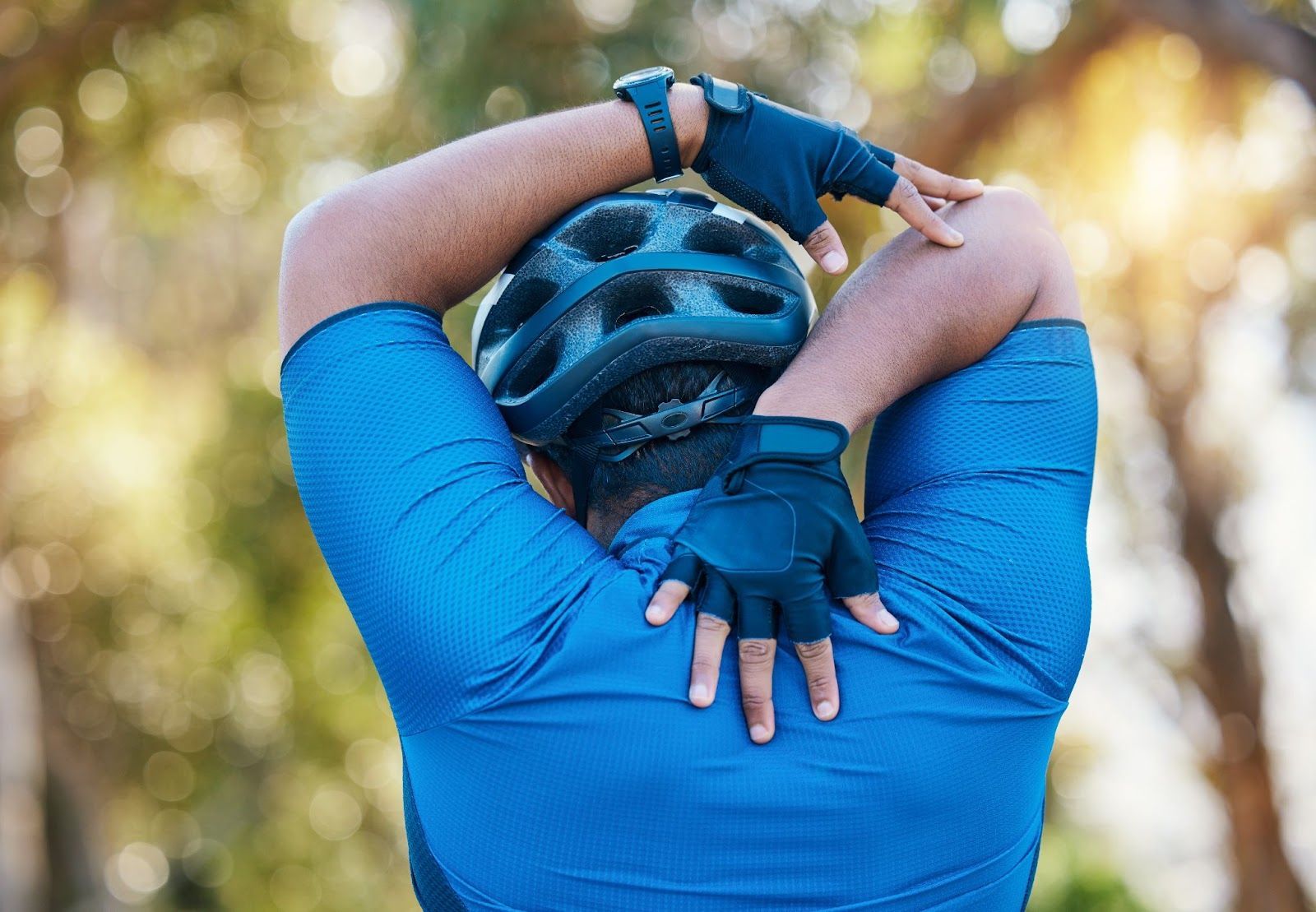
Before embarking on a cycling journey, it's essential to prime your body for the ride ahead. Dynamic warm-up stretches are a key component of any cyclist's pre-ride routine, helping to increase blood flow to the muscles, improve flexibility, and reduce the risk of injury. In this section, we'll explore three dynamic stretches designed to prepare your body for the demands of cycling.
Leg Swings
Leg swings are an excellent way to loosen up the muscles in your lower body, particularly the hamstrings and hip flexors. To perform leg swings, stand tall with your feet hip-width apart and swing one leg forward and backward in a controlled motion. Keep your movements smooth and fluid, gradually increasing the range of motion as you swing your leg higher. Perform 10 to 15 swings on each leg, focusing on maintaining good posture and engaging your core muscles for stability.
Arm Circles
Arm circles help to mobilize the shoulder joints and warm up the muscles in your arms and upper back. Begin by standing with your feet shoulder-width apart and extending your arms to the sides at shoulder height. Slowly rotate your arms in small circles, gradually increasing the size of the circles as you warm up. Aim for 10 to 15 repetitions in clockwise and counterclockwise directions, focusing on maintaining smooth, controlled movements and keeping your shoulders relaxed.
Hip Rotations
Hip rotations effectively improve hip mobility and loosen the muscles around the hip joints. Start by standing with your feet hip-width apart and placing your hands on your hips for stability. Slowly rotate your hips in a circular motion, moving clockwise for several repetitions before switching to a counterclockwise rotation. Focus on maintaining a steady pace and breathing rhythmically throughout the movement, aiming for 10 to 15 rotations in each direction.
Integrating a regular stretching routine into their training regimen, cyclists can enhance their range of motion, reduce muscle tension, and improve overall flexibility. This stretching enhances their cycling efficiency and minimizes the risk of strains, sprains, and overuse injuries.
Stretching for Lower Body
Proper lower body flexibility is crucial for cyclists to maintain optimal performance and prevent injuries. Stretches targeting the quadriceps, hamstrings, and calves are key muscle groups involved in cycling. These stretches help improve flexibility, reduce muscle tightness, and enhance overall mobility, allowing cyclists to pedal more efficiently and comfortably.
Quadriceps Stretches
The quadriceps are the large muscles at the front of the thigh responsible for extending the knee joint. Tightness in these muscles can lead to decreased flexibility and increased risk of injury. Quadriceps stretches target these muscles to alleviate tightness and improve lower body flexibility.
Hamstring Stretches
The hamstrings at the back of the thigh play a crucial role in knee flexion and hip extension during cycling. Stretching the hamstrings helps prevent muscle tightness and reduces the risk of strain or injury. Incorporating hamstring stretches into a cyclist's routine can improve flexibility and enhance performance on the bike.
Calf Stretches
The calf muscles, including the gastrocnemius and soleus, are actively engaged during cycling, particularly during the pushing phase of the pedal stroke. Calf stretches target these muscles to alleviate tightness and improve ankle flexibility. By incorporating calf stretches into their routine, cyclists can reduce the risk of cramps and maintain optimal lower body function.
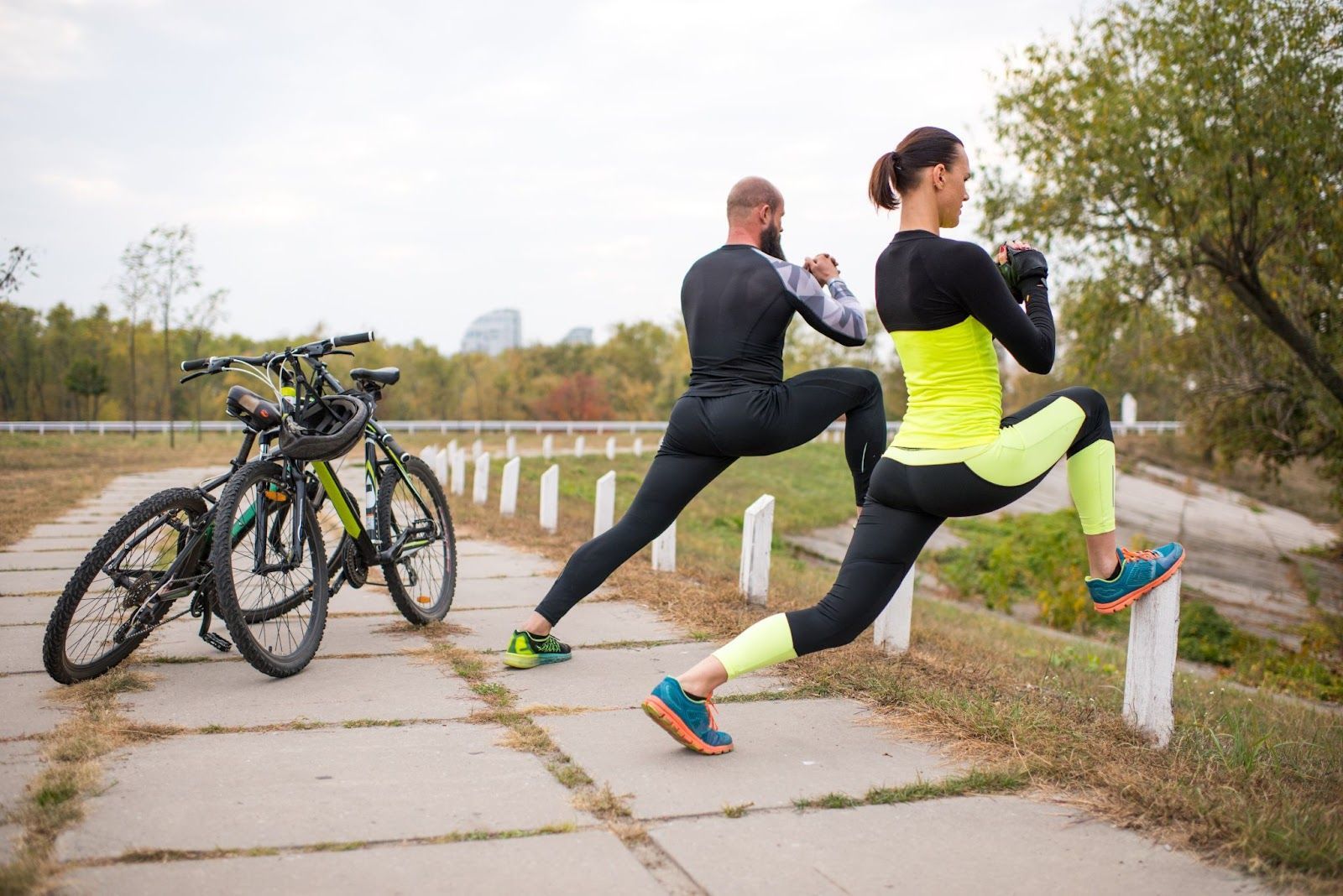
Stretching for Upper Body
Maintaining flexibility and mobility in the upper body is also vital for cyclists to maintain proper posture and reduce tension in the shoulders, chest, and upper back. Incorporating stretches targeting these areas can help cyclists prevent discomfort and maintain optimal upper body function.
Shoulder Stretches
The shoulders are actively engaged during cycling, especially when maintaining an aerodynamic position. Stretching the shoulders helps alleviate tension and improve the range of motion, reducing the risk of discomfort or injury. Shoulder stretches can include exercises such as shoulder rolls and arm circles to promote flexibility and mobility in the shoulder joints.
Chest Stretches
Cycling often involves a forward-leaning position, leading to tightness and discomfort in the chest muscles. Chest stretches help counteract this by opening the chest and stretching the pectoral muscles. Incorporating chest stretches into a cyclist's routine can improve posture and reduce the risk of shoulder and neck pain.
Upper Back Stretches
Tension and tightness in the upper back can result from prolonged cycling in a hunched position. Stretching the upper back helps alleviate stiffness and improve mobility in the thoracic spine. Exercises such as the seated twist and doorway stretch target the upper back muscles, promoting relaxation and reducing discomfort for cyclists.
Core Strengthening and Stability Exercises
A strong and stable core is essential for cyclists to optimize performance and prevent injury on the road. Incorporating core strengthening and stability exercises into your training routine can enhance your posture, balance, and overall cycling efficiency.
Plank Variations
Planks engage multiple muscle groups simultaneously, including the abdominals, back, and shoulders, promoting overall core strength and stability. Front planks involve holding a push-up position with the body in a straight line from head to heels, while side planks target the obliques and lateral muscles.
Adding plank twists by rotating the torso side to side during a plank helps to challenge the core muscles further and improve rotational stability.
Bicycle Crunches
Bicycle crunches effectively target the rectus abdominis and oblique muscles, mimicking the pedaling motion of cycling while engaging the core. Lie on your back with knees bent, hands behind the head, and lift your shoulders off the ground.
Alternate bringing your right elbow towards your left knee while extending the right leg, then switch sides in a fluid pedaling motion.
Incorporating these core strengthening and stability exercises into your training regimen can enhance your cycling performance, reduce the risk of injury, and support overall athletic development. By building a solid core foundation, cyclists can ride with improved efficiency, endurance, and control.
Flexibility Training and Mobility Exercises
Flexibility is crucial for cyclists, aiding in injury prevention and enhancing mobility. Targeted flexibility training improves range of motion, alleviates muscle tension, and optimizes cycling mechanics. Stretching hip flexors lengthen muscles, improve hip mobility, and reduce lower back and pelvic tension. Spinal twists release back, shoulder, and hip tension while improving spinal health. Prioritizing flexibility and mobility ensures optimal performance and comfort on the bike, minimizing injury risk for cyclists.
Recovery Stretches
Incorporating recovery stretches into a post-ride routine is essential for cyclists to aid muscle recovery and prevent stiffness and soreness. These stretches help to release tension accumulated during the ride and promote muscle relaxation, allowing for a smoother recovery process. By dedicating time to cool-down stretches after a ride, cyclists can improve flexibility, reduce muscle tightness, and enhance overall recovery. Full-body relaxation poses, such as child's and corpse poses, are particularly effective for promoting deep relaxation and releasing tension throughout the body, helping cyclists unwind and rejuvenate after a challenging ride.
Optimizing Cycling Performance
Combining your stretching routines into your cycling regimen is essential for maximizing performance, preventing injuries, and fostering overall well-being. By prioritizing dynamic warm-up stretches, targeting key muscle groups, strengthening the core, enhancing flexibility, and implementing recovery stretches, cyclists can refine their cycling mechanics, enhance muscle engagement, and minimize the risk of injuries. Consistency is paramount, so stretch your cycling routine to fully capitalize on its benefits and enjoy a more gratifying and enduring cycling journey. Remember, by prioritizing your body's requirements through strategic stretching practices, you'll undoubtedly elevate your performance and longevity as a cyclist.
Check out our
StretchX blog to learn more about the right stretching options for your individual needs.

